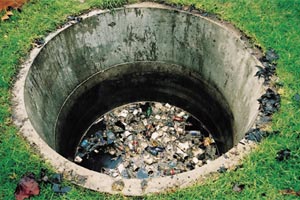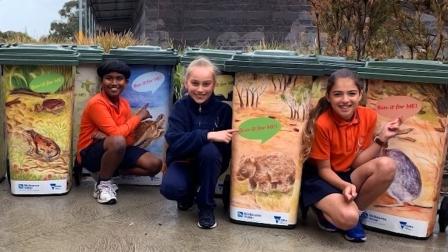Gross pollutants traps are structures that use physical processes to trap solid waste such as litter and coarse sediment. They are commonly used as the primary treatment because they mostly remove large, non-biodegradable pollutants.
Treatments and contaminants

Primary treatment includes:
-
physical screening
-
rapid sedimentation
-
separation processes
Typical retained contaminants include:
-
gross pollutants
-
coarse sediments
How gross pollutant traps work
There are many different types of gross pollutant traps. All of them perform a similar function: trapping litter and sediment above 5 millimetres in size so that they can be removed from the water system. By removing large pollutants, downstream treatment of stormwater can occur more effectively.
Since gross pollutant traps tend not to be effective in removing nutrient, they are most often used as part of a treatment train with other stormwater treatment measures such as wetlands or bio-retention systems.
Selecting a gross pollutant trap
Selecting a gross pollutant trap for stormwater installations can be confusing, with many vendor claims and issues to consider. Ideally, every system should be independently verified.
We take a conservative approach when considering gross pollutant trap systems. When assessing a system, we require validation of manufacturer claims such as nutrient removal.
Advantages and limitations
Advantages of gross pollutant traps are that they:
-
have a relatively small lateral footprint
-
are hidden from view
Limitations of gross pollutant traps are that they:
-
provide limited removal of fine sediment and dissolved pollutants
-
have a high cost of build
-
are complex to install
-
require regular cleaning
Tips and advice
Most off-the-shelf gross pollutant traps are suited to pre-treatment of small to medium sized systems, so are not meant for treating large areas of catchment like wetlands. Sediment ponds are usually the preferred option for larger systems.
For more information on the design of gross pollutant traps, refer to Chapter 14 “Other Measures" in the WSUD Engineering Procedures available for purchase from CSIRO publishing.
WSUD Engineering Procedures - CSIRO Publishing
You may also like...
Litter management
Like you, we don't like seeing litter being washed off streets into stormwater drains and into our waterways.

Help make litter extinct
As Melbourne grows, the amount of litter does too. Together, let’s make litter extinct!
